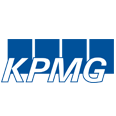 Democratic Republic of the Congo (French: République démocratique du Congo), sometimes referred to as DR Congo, Congo-Kinshasa or the DRC, is a country located in central Africa. It is the second largest country in Africa by area and the eleventh largest in the world. With a population of over 75 million,[1] the Democratic Republic of the Congo is the nineteenth most populous nation in the world, the fourth most populous nation in Africa, as well as the most populous officially Francophone country.
Democratic Republic of the Congo (French: République démocratique du Congo), sometimes referred to as DR Congo, Congo-Kinshasa or the DRC, is a country located in central Africa. It is the second largest country in Africa by area and the eleventh largest in the world. With a population of over 75 million,[1] the Democratic Republic of the Congo is the nineteenth most populous nation in the world, the fourth most populous nation in Africa, as well as the most populous officially Francophone country.
It borders the Central African Republic and South Sudan to the north; Uganda, Rwanda, and Burundi in the east; Zambia and Angola to the south; the Republic of the Congo, the Angolan exclave of Cabinda, and the Atlantic Ocean to the west; and is separated from Tanzania by Lake Tanganyika in the east.[1] The country has access to the ocean through a 40-kilometre (25 mi) stretch of Atlantic coastline at Muanda and the roughly 9 km wide mouth of the Congo River which opens into the Gulf of Guinea. It has the second-highest total Christian population in Africa.
The Second Congo War, beginning in 1998, devastated the country and is sometimes referred to as the “African world war” because it involved nine African nations and twenty armed groups. Despite the signing of peace accords in 2003, fighting continued in the east of the country in 2007. There, the prevalence of rape and other sexual violence is described as the worst in the world. The war is the world’s deadliest conflict since World War II, killing 5.4 million people since 1998. More than 90% were not killed in combat. They died from diseases that were both preventable and treatable (malaria, diarrhea, pneumonia and malnutrition) aggravated by displaced populations living in unsanitary and over-crowded conditions that lacked access to shelter, water, food and medicine. Forty seven percent of those deaths were children under five.[7] Until today the ongoing conflicts excerbates the exhaustion of the country’s great agricultural potential. This is one reason for a high mortality rate and prevalence of malnutrition.
Conflict for control of the mineral wealth is behind some of the most violent atrocities.
The Democratic Republic of the Congo was formerly, in chronological order, the Congo Free State, Belgian Congo, Republic of the Congo, and Zaire (Zaïre in French). Though it is located in the Central African UN subregion, the nation is also economically and regionally affiliated with Southern Africa as a member of the Southern African Development Community (SADC).
The Congo is situated at the heart of sub-Saharan Africa and is bounded by (clockwise from the southwest) Angola, the South Atlantic Ocean, the Republic of Congo, the Central African Republic, South Sudan, Uganda, Rwanda, Burundi, Tanzania across Lake Tanganyika, and Zambia. The country lies between latitudes 6°N and 14°S, and longitudes 12° and 32°E. It straddles the Equator, with one-third to the North and two-thirds to the South. The size of Congo, 2,345,408 square kilometres (905,567 sq mi), is slightly greater than the combined areas of Spain, France, Germany, Sweden, and Norway.
As a result of its equatorial location, the Congo experiences high precipitation and has the highest frequency of thunderstorms in the world. The annual rainfall can total upwards of 2,000 millimetres (80 in) in some places, and the area sustains the Congo Rainforest, the second largest rain forest in the world (after the Amazon). This massive expanse of lush jungle covers most of the vast, low-lying central basin of the river, which slopes toward the Atlantic Ocean in the west. This area is surrounded by plateaus merging into savannas in the south and southwest, by mountainous terraces in the west, and dense grasslands extending beyond the Congo River in the north. High, glaciated mountains are found in the extreme eastern region (Rwenzori Mountains).
The tropical climate has also produced the Congo River system which dominates the region topographically along with the rainforest it flows through, though they are not mutually exclusive. The name for the Congo state is derived in part from the river. The river basin (meaning the Congo River and all of its myriad tributaries) occupies nearly the entire country and an area of nearly 1,000,000 km2 (390,000 sq mi). The river and its tributaries (major offshoots include the Kasai, Sangha, Ubangi, Aruwimi, and Lulonga) form the backbone of Congolese economics and transportation. They have a dramatic impact on the daily lives of the people.
The sources of the Congo are in the Albertine Rift Mountains that flank the western branch of the East African Rift, as well as Lake Tanganyika and Lake Mweru. The river flows generally west from Kisangani just below Boyoma Falls, then gradually bends southwest, passing by Mbandaka, joining with the Ubangi River, and running into the Pool Malebo (Stanley Pool). Kinshasa and Brazzaville are on opposite sides of the river at the Pool.
Then the river narrows and falls through a number of cataracts in deep canyons (collectively known as the Livingstone Falls), and then running past Boma into the Atlantic Ocean. The river also has the second-largest flow and the second-largest watershed of any river in the world (trailing the Amazon in both respects). The river and a 45 km wide strip of land on its north bank provide the country’s only outlet to the Atlantic.
The previously mentioned Albertine Rift plays a key role in shaping the Congo’s geography. Not only is the northeastern section of the country much more mountainous, but due to the rift’s tectonic activities, this area also experiences volcanic activity, occasionally with loss of life. The geologic activity in this area also created the famous African Great Lakes, three of which lie on the Congo’s eastern frontier: Lake Albert (known during the Mobutu era as Lake Mobutu Sese Seko), Lake Edward (known during the Amin era as Lake Idi Amin Dada), and Lake Tanganyika. Lake Edward and Lake Albert are connected by the Semliki River.
The Rift Valley has exposed an enormous amount of mineral wealth throughout the south and east of the Congo, making it accessible to mining. Cobalt, copper, cadmium, industrial and gem-quality diamonds, gold, silver, zinc, manganese, tin, germanium, uranium, radium, bauxite, iron ore, and coal are all found in plentiful supply, especially in the Congo’s southeastern Katanga region.
On 17 January 2002 Mount Nyiragongo erupted in Congo, with the lava running out at 40 mph (64 km/h) and 50 yards (46 m) wide. One of the three streams of extremely fluid lava flowed through the nearby city of Goma, killing 45 and leaving 120,000 homeless. Four hundred thousand people were evacuated from the city during the eruption. The lava poisoned the water of Lake Kivu, killing fish. Only two planes left the local airport because of the possibility of the explosion of stored petrol. The lava passed the airport but ruined the runway, entrapping several airplanes. Six months after the 2002 eruption, nearby Mount Nyamulagira also erupted. Mount Nyamulagira also erupted in 2006 and again in January 2010.
| Rank | Operator | Technology | Subscribers (in millions) |
Ownership |
|---|---|---|---|---|
| 1 | Airtel | GSM-900 3G (HSPA+) |
5.0(Aug, 2012) | Bharti Airtel (98.5%) |
| 2 | Vodacom | GSM-900/1800 Wimax |
6.24 (Jun, 2012) | Vodacom (51%), Congolese Wireless Network (49%) |
| 3 | Tigo | GSM | 2.3 (Sep, 2010) | MIC (100%) |
| 4 | Orange-RDC | GSM-900 3G+ (HSDPA) |
2.3(Nov, 2012) | France Telecom (100%) (formerly: Congo Chine Télécoms) |
| 5 | Supercell | GSM-900 | 0.028 (covers Kivu only) | |
| 6 | Africell | GSM 3G |
2.0 (Mar 2013) | Lintel Limited |
| 7 | SemaTel | GSM | not started | Hits Telecom (60%) |
| 8 | U-Com | CDMA | not started | Global Vision Telecom (Telecel International) |









